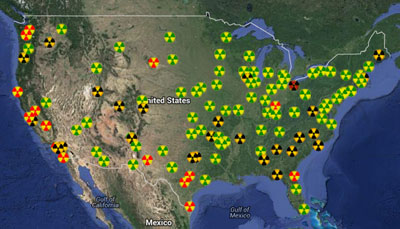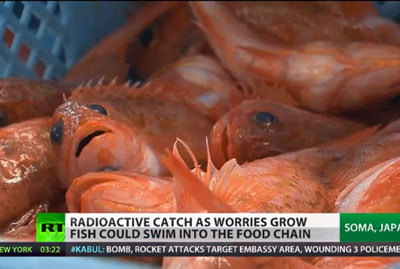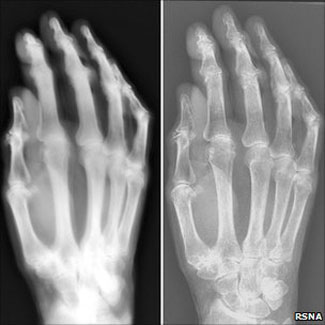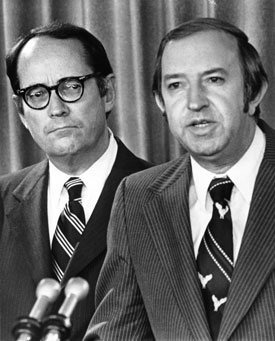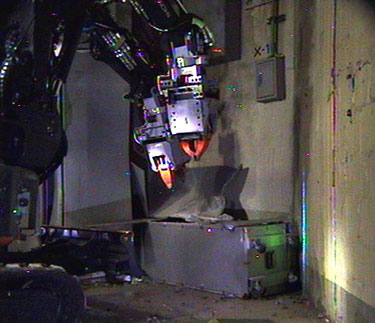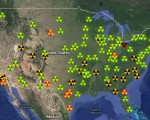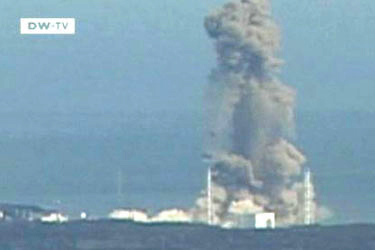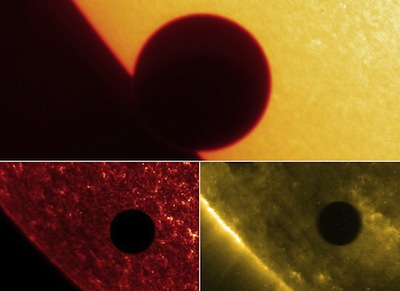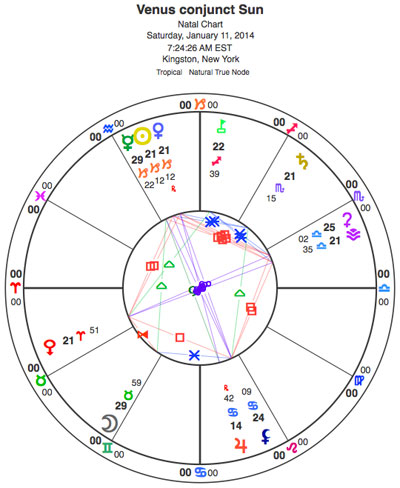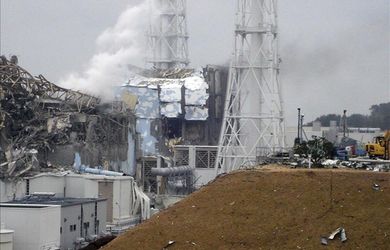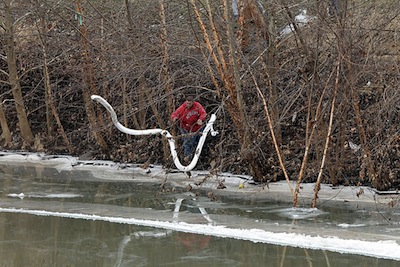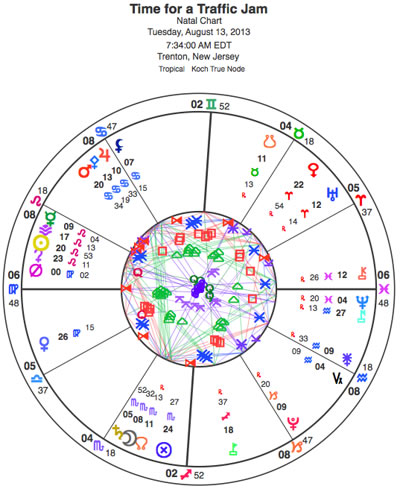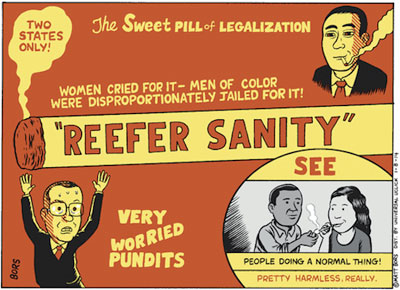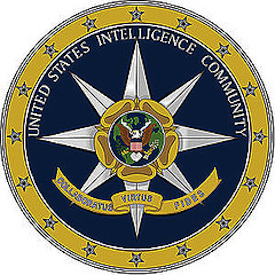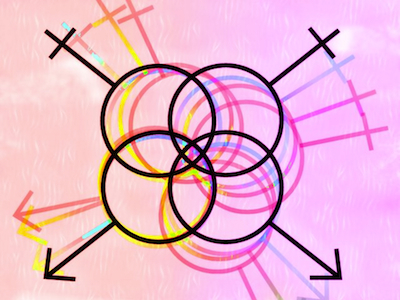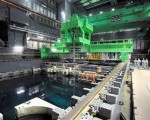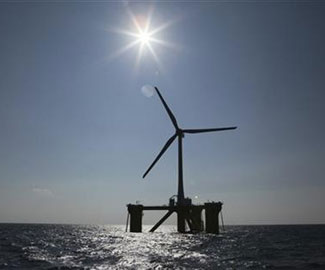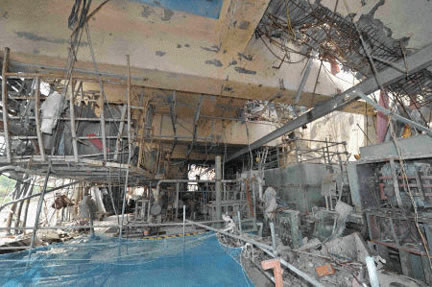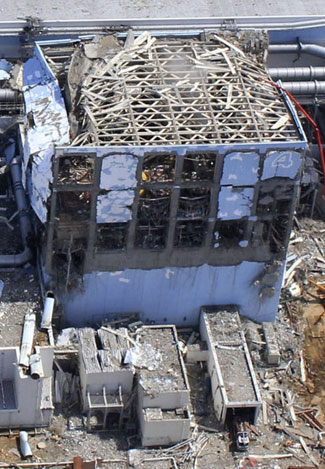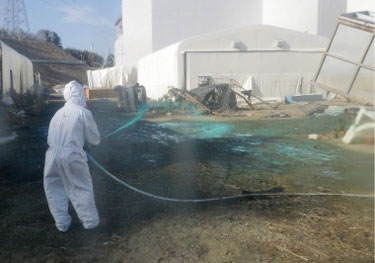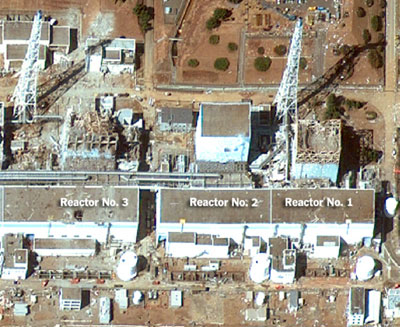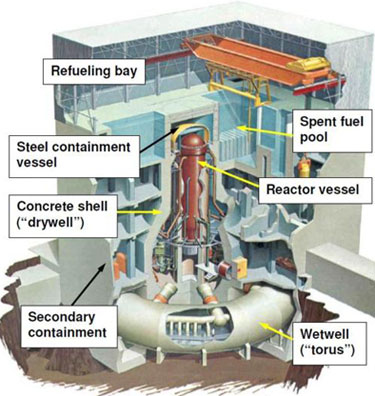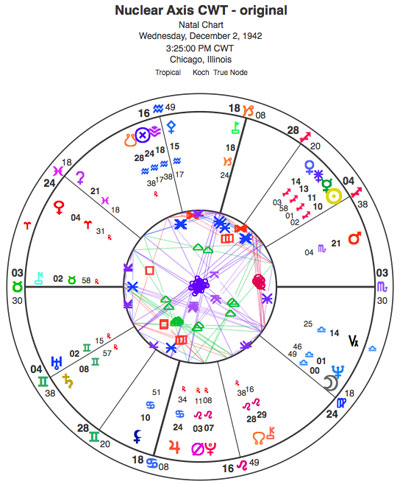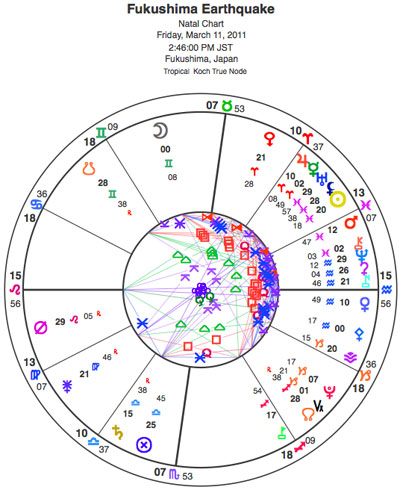Dear Friend and Reader:
The astrology of the moment is the Sun’s interior conjunction with Venus. This is the midpoint of the Venus retrograde process (please see SKY section below), when Venus passes exactly between the Earth and the Sun. Venus stations direct on Jan. 31.
|
|
|
Last crescent of Venus photographed by Shahrin Ahmad on Jan. 2, 2014, in Sri Damansara, Malaysia.
|
Venus retrogrades don’t tend to cause the commotion that Mercury retrogrades cause, though I consider them significant events in part because any inner planet retrograde brings interesting revelations, and also because Venus is retrograde the least of all the planets, just a shade over 7% of the time. That is, Venus is retrograde for six weeks out of every 18 months.
On Saturday we will experience the first interior conjunction of Venus and the Sun since the infamous transit of Venus in June 2012. That was a conjunction so exact that, weather permitting, you could actually see Venus seem to walk across the surface of the Sun. And it was so rare that a transit of Venus will not repeat until 2117.
Even without a transit, I consider the conjunction significant, since it’s a major moment in the Sun-Venus cycle. Adding emphasis, this one takes place at 22 degrees of Capricorn, making aspects to numerous other points, including Saturn, dwarf planet Eris, asteroids Vesta, Ceres, Tantalus and centaur Pholus. It will be interesting to see what this brings out into the open, since it makes contact with so many other hotspots in the sky.
Sun-Venus in Capricorn will be exactly sextile Saturn, the ruler of Capricorn, which reflects the relatively calm, stable influence of this Venus retrograde. As I mentioned once before, we have not had a Venus retrograde exclusively in Capricorn since the winter of 1802-1803.
Since then, till now, when Venus stations retrograde in Aquarius, it dips back into Capricorn. This time, however, the retrograde starts and ends in Capricorn, for the first time since the administration of Pres. Thomas Jefferson.
Meanwhile, solar flares earlier in the week resulted in this storm warning from the federal government: “NOAA forecasters estimate a 90% chance of geomagnetic storms on Jan. 9th when a CME is expected to hit Earth’s magnetic field. The speed of the solar wind around Earth could spike to 700 km/s (1.6 million mph) shortly after the impact, sharply compressing Earth’s magnetosphere. High-latitude sky watchers should be alert for auroras.”
We have been watching Sun spots and solar flares for a while, and I have not noticed any specific kinds of events or tendencies associated with them. However, given the rest of what we know about astrology, I think it’s unlikely that they could have no effect whatsoever.
In The News: A Little is Not So Bad
One trend I’ve noticed this week is a series of articles on the Internet claiming that the dangers of radiation leaking from Fukushima are minimal or nonexistent. We find out which environmental experts would feel confident swimming along the Japanese coastline or chow down a family-sized boat of yellowtail sashimi. The articles seek to debunk another meme, which I first noticed in late December, describing how the situation is actually a lot worse than we’re being told.
|
|
|
This was the explosion at Unit 3 on March 14, 2011, which blew apart the building and injured 11 people. There is some speculation that the pattern of smoke looks more like a mushroom cloud than a hydrogen gas explosion.
|
In November, purported removal of spent fuel assemblies from the severely damaged Unit 4 structure began, and then news of that process went quiet, lending itself to all kinds of speculation.
In December and early January, there were numerous citizen reports of increased radiation levels in the United States [this link provides a summary], as well as confirmed reports of another bout of steam leaking from the plutonium-contaminated wreckage of Unit 3 (see ECO section).
Additional releases from Unit 3 are troubling because it’s the one reactor at Fukushima Daiichi that was known to contain MOX or mixed oxide fuel, which means that it has plutonium. This is the most lethal radioactive substance in common usage, the element invented to create the hydrogen bomb. Among the reasons plutonium is being used in commercial nuclear reactors is to get rid of the excess so that it’s not used by terrorists to make nuclear bombs. But the resulting nuclear waste is just as toxic.
Dr. Helen Caldicott has said that even a millionth of a gram (a microgram) of plutonium embedded in someone’s lung can cause lung cancer. So you don’t want to mess with any of this stuff, it should be nowhere near people and it should not even exist. But it does, and it’s become something of a trend to use plutonium in commercial nuclear reactors.
One such assurance of safety was repeated by the noted American astrologer Rob Brezsny, in his newsletter this week. I am in a dialog with Rob about this; here is my most recent reply, which I am posting as an open letter. Rob’s horoscope column appears in about 130 newspapers and he has correspondingly high web traffic.
An Open Letter to Rob Brezsny
Why You Should Be Concerned About Fukushima Radiation
Hi Rob,
In your newsletter this week, you said, “The scaremongering about Fukushima is grossly overblown,” and provide a link to this site, in which the author assures us that it’s OK to eat fish from the Pacific Ocean as long as they’re not from Japan, and declares that radiation reaching the West Coast “will not be dangerous.”
|
|
Radiation map of the continental United States from December 2013, showing increased levels toward the western U.S., closer to Japan. The data is from the Nuclear Emergency Tracking Center, a private organization that aggregates government data.
|
The author states almost gleefully, “I certainly feel safe eating sustainable seafood from the Pacific and so should you.”
My problem with your statement is that as far as the public is concerned, you’re saying don’t worry, and you’re not asking any questions at all. “Grossly overblown” does not even suggest you believe there might be a potential question.
Why are you eager to spread the word that Fukushima is safe, or safe until proven dangerous? The problem does not have to be imminent disaster and the threat of relocation. Fukushima will proceed as a slow-motion crisis as the radiation gradually diffuses from the wreckage to the rest of the environment, concentrating in living creatures and working its way up the food chain. We have been covering this since the beginning — it’s a very serious situation, and it’s not getting any better.
There is no safe level of radiation exposure. Additionally, not everyone similarly situated gets the same exposure from an incident. Someone who eats one contaminated fish is going to have a problem, whereas someone who does not eat that fish won’t have that particular problem. But there is no way to predict who will and who will not eat that one fish. Every fish is not being tested.
“Don’t eat fish from Japan” is ridiculous advice. Everyone who eats sushi eats fish from Japan, and it’s obvious that some fish from Japan will be improperly classified and sold as non-Japanese product.
Vegetarians are not immune. Many edible plants collect and concentrate radiation. This creates direct exposure and it moves up the food chain, ending up in dairy products and elsewhere.
Not everyone’s body responds to exposure the same way. Some people, such as immune-compromised people, and cancer patients on chemotherapy, are much more vulnerable. Children and small animals are more vulnerable.
Further, we all have a body burden of artificial radiation, from X-rays, radiotherapy, nuclear bomb testing that exposed the entire U.S. population, contaminated food from those tests that was distributed to the population, leaks from nuclear reactors, microwave ovens, irradiated foods, cellular telephones and cell towers.
The entire West Coast is receiving radiation from the Manhattan Project dumps at Hanford, WA (via water table contamination), which then goes into the Columbia River and is transported to the Pacific and carried up and down the coast by currents.
So we already have a lot of radiation we’re dealing with; let’s not forget increases in UV radiation exposure from ozone depletion. Therefore, whatever we get from Fukushima is adding to an already serious problem. Since when does adding any more make it OK?
Since when, with the cancer rate hovering at around 50%?
I do not need to present any evidence of any specific danger to be ‘right’. I don’t have to find a thousand contaminated fish or even one of them. My role is to educate people about the precautionary principle: what do you believe, and what do you do, in the face of missing or incomplete information, especially when there is a known point source, a known contamination crisis?
|
|
|
Ordinary X-rays add to our total body burden of radiation. Each dose adds to what is already there.
|
I am pointing out that the blanket conclusions or assurances of safety cannot be right. And this is what the nuclear industry and its proponents always do. The exposure is always the equivalent of a dental X-ray.
Blanket assurances don’t stand up when there is a known deadly substance present, combined with insufficient data, a data blackout, a propaganda stream, conflicting data or facts plainly indicating a problem — such as the established fact of all Pacific tuna being contaminated.
In any environmental incidents I’ve ever covered or heard of, from Love Canal to 9/11 to Three Mile Island to SUNY New Paltz, the goal of officialdom is to minimize the perception of danger.
The official position is always that something is safe until proven dangerous, and that anyone talking about the dangers is an alarmist. The official position is that a little is OK and it’s fine if you only kill a few people (that’s known as risk assessment).
The popular position is usually “please, tell me it’s safe.” The precautionary principle says, you must do a worst-case analysis. However, if that were applied to nuclear power, it could not exist, because the worst case, which keeps happening, is so bad that society cannot actually deal with it.
Fukushima cannot be cleaned up; this mess will torment hundreds of generations into the future, who will never know a moment of benefit from the electric power that was generated by the plant.
You said: “Further evidence of sloppy research fed by emotion, not objective reporting: You say that Woods Hole is ‘chopping wood for the nuclear industry’. Do you have even a shred of evidence for that claim?”
In my experience, anyone who repeats knowing lies about a nuclear incident is doing the work of the nuclear industry, particularly if they bear scientific credentials. It does not matter if somewhere else they say they have their concerns; that merely creates the appearance of balance. Direct evidence of collusion is unnecessary. The fingerprints are in the point of view that supposedly objective scientists share with profit-driven, verging-on-psychotic proponents of nuclear power — that all is well. Don’t worry. I would feed that to my kid.
|
|
In 1980, then-Gov. Dick Thornburgh and Harold Denton of the Nuclear Regulatory Commission talk to the press about the Three Mile Island partial meltdown. Photo: Univ. of Pittsburgh.
|
Woods Hole Oceanographic Institute knows better than to declare the fish and the oceans safe without even saying there are real questions. By definition that is deceptive.
On their FAQ page, they leave out issues like biomagnification, as well as migratory fish and the known extent of the plume. They are taking a position used by polluters in the ’60s and ’70s that all you need to do is water down the toxins. Then through bioconcentration, various biota gather it right back up the food chain, where we humans reside at the very top.
Any responsible scientist who wants to minimize the danger would say, “based on the data, we don’t know,” but the problem with that is there is a lot of data indicating a widespread, uncontained problem.
The ethical position when there is missing or insufficient data is to tell people that they must take the time to inform themselves, and make their own decision once admitting that there are certain variables. But we do know enough to know there is a serious problem.
The ethical position is not to declare the story overblown. Declaring a rumor overblown is one thing — but you would have to specifically debunk THAT specific rumor to do so.
Just because there were a series of Internet memes suggesting much worse dangers, some of which may have been exaggerated, does not make them wrong. They are based on something real — Unit 3 is releasing steam, as confirmed by TEPCO; Unit 3 melted down; it has MOX plutonium fuel, and a lot of old assemblies in the spent fuel pool.
You wrote: “I wonder if you think that Scientific American, National Geographic, and the National Academy of Sciences have joined Woods Hole in chopping wood and carrying water for the nuclear industry. They all have downplayed the dire doomsday prophecies circulating on Facebook, the Internet, and the Alex Jones radio show.”
This is not a case of either NAS or Alex Jones is right. That is a false dichotomy. As regards Scientific American, they have lied about dioxin before, along with many other ‘reputable’ journals repeating a series of fraudulent studies paid for by Monsanto. None of the secondary sources ever retracted their articles once the studies were proven fraudulent in later litigation.
|
|
Robots working on the first floor of the Fukushima Unit 3 reactor building, a place too contaminated for humans to go.
|
National Academy of Sciences is all over the map. What they say is not true just because they say it; they are an entity very close to the government and must respond to political forces, like most other large institutions. One recent case I know about is their declaring the anti-HPV Gardasil vaccine safe, when there are numerous reports of severe reactions and some deaths in young girls who got the injection. On the other hand they are realistic about climate change.
Supposedly credible sources may downplay Alex Jones but that does not make him wrong. They may downplay the increased radiation levels that citizen monitors are reporting, and the leaking steam from the MOX wreckage at Unit 3.
The thousands of tons of spent fuel on the Fukushima site present a real and ongoing threat, and if there is an expanded incident, it will be too late to prepare after the fact.
Three hundred tons of radioactive water each and every day leaking into the Pacific Ocean is not a joke. It is nothing to minimize. All that radiation goes somewhere, and it’s showing no signs of stopping.
Fukushima is in the path of typhoons, earthquakes and tsunamis. There are thousands of tons of uranium and plutonium fuel on site. All of the buildings are in bad shape and most could not withstand another serious quake. There is nothing stable or safe about this situation, and it’s so toxic that reporters cannot even get near it for more than an hour.
Meanwhile, Japan has passed a law making it a crime to reveal or report on ‘state secrets’, including Fukushima. And to give one example how that works in the United States, MSNBC, the closest thing to real TV news, is co-owned by GE, the company that manufactured the reactors. So we cannot trust what is in the media.
That is what we need to be talking about.
With love,

Section Writing and Editing Credits: News items below are written and edited by a team consisting of Hillary Conary, Anne Craig, Eric Francis, Elizabeth Michaud, Amanda Painter, Susan Scheck, Chad Woodward and Carol van Strum. Page assembled and coded by Anatoly Ryzhenko. Special thanks to the Fact Checkers List, which goes over each edition on Thursday night — and to our main astrology fact-checker Alex Miller, and Amanda, who goes over all their suggestions. Our editions are also proofread and fact-checked by Jessica Keet.

Ring That Bell
This weekend is the midpoint (or halfway-done point) of Venus retrograde. Venus passes exactly between the Earth and the Sun, forming what is called the interior (formerly known as ‘inferior’) conjunction. In an astrological chart, Venus and the Sun align to the degree and minute. This happens Saturday, Jan. 11 at 7:24 am EST. Venus will station direct on Jan. 31, so we have about three weeks to go.
|
|
|
Three images of Venus transiting the Sun last year, as it was retrograde in Gemini. Its retrograde through Capricorn will not take it across the face of the Sun during their conjunction Saturday. Images: NASA/LMSAL.
|
For those who are following this interesting and fairly rare transit (Venus is retrograde least of all the planets, just a shade over 7% of the time), this may be a moment of revelation. Venus retrograde is a kind of review phase. In Capricorn, you can think of it as a review of your relationship to tradition and traditional values.
They deserve to be questioned. Sometimes the ways of the past are wise and enrich our lives (such as eating actual food, having conversations and reading books). Sometimes they make no sense at all (treating people as possessions, taking advice about sex from priests, smothering ourselves in self-deception).
The Sun conjunct Venus in Capricorn sets the agenda of asking yourself whether you do things the way they were done in the past, especially if that’s your only reason for doing so, and what the impact of this is on your life.
Venus conjunct the Sun is a moment of revelation; it’s as if some light comes in a dark place, suddenly allowing you to see where you are and what’s around you. It’s an original thought within a maze of pre-programmed thinking.
The interesting thing about this conjunction of Venus and the Sun is that it aspects many, many other planets around the solar system. The conjunction is sextile Saturn. It’s loosely opposite Jupiter. It’s making aspects to many minor planets — Vesta, Ceres, Eris and Tantalus. It rings the bell of the entire sky. And that bell is a wake-up call.
|
|
Simplified chart for Venus conjunct the Sun, with Mercury also in Capricorn. Also shown (clockwise): Pholus in Sag, Saturn in Scorpio, Ceres and Vesta in Libra, Jupiter and Black Moon Lilith in Cancer, Moon in Taurus and Eris in Aries. See glyph legend here.
|
This combination of factors, particularly Vesta, Tantalus, Eris and Ceres, speak to our traditions around ‘yes’ and ‘no’. For example, there is a tradition to think of yes and no in moral terms — doing the right thing. Yet in reality they are more negotiated in business terms: is the price right? The tradition of covering over a business motive with a moral motive is one that would benefit from being questioned.
The chart illustrates a situation where, if you ask one question, you will inevitably ask another. It shows how certain issues you think are unrelated actually reach into all aspects of your life. That’s the nature of asking real questions, and part of why I think they are so unpopular. Yet at a certain point they start to ask themselves.
This can come in the form of a crisis on the approximate theme, “How did I get where I am today?” and “How can I change this thing that’s been the same forever?” Or, “Do I have the guts to tell the truth?” Not telling the truth is a temporary expedient that, unfortunately, becomes a permanent non-solution. That is smothering. Open your inner ears and listen — to whether you’re rationalizing something, denying a basic need, or doing something merely because it’s how you did it in the past.
And if your reason for that is, “It’s the traditional thing to do,” I suggest you put that under the microscope and see what it’s made of.

Steam and Radiation On The Rise
Steam has recently been seen emanating from Unit 3 at the Fukushima Daiichi nuclear power plant. TEPCO, the Japanese utility in charge of operations at Fukushima Daiichi, confirmed that steam had been detected by surveillance cameras on Dec. 19, 24, 25 and 27.
The steam appears to be coming from the fifth floor of the building, which was destroyed by an earthquake and tsunami on March 11, 2011. This is the first report of steam rising from that location since July 2013.
|
|
|
Steam rising from wreckage of Fukushima Unit 3, taken during the last steam episode in July 2013. Photo by Rex Images.
|
TEPCO has no explanations for the source or cause of the steam, and workers cannot access the building because radiation levels are too high to go near it.
Unit 3 suffered severe damage from an explosion caused by a hydrogen buildup that breached the containment vessel.
The reactor core of Unit 3, containing fuel comprising uranium and mixed uranium and plutonium (called MOX or mixed oxide nuclear fuel) went into full meltdown, likely melting into the earth below.
Meanwhile, the spent fuel pool in Unit 3 contains 89 tons of highly dangerous MOX nuclear fuel, along with the 514 spent fuel assemblies. The fact that MOX fuel is stored on site at Fukushima Daiichi raises serious questions about the advantages of its use, and the risks associated with highly toxic and lethal plutonium.
Explanations for the rising steam include the possibility that the melted core, now turned into corium, may have reached the groundwater beneath Unit 3, resulting in the release of vapor. Back in July, TEPCO hypothesized that rainwater falling upon stray fuel pellets and fuel rod fragments in the containment vessel could be causing the steam.
There’s also the chance that spontaneous fission could be occurring in the storage pool as water is heated and evaporated, leaving the fuel rods exposed and melting down, releasing radiation into the air. With 89 tons of MOX fuel in that pool, this release of radiation would contain highly volatile plutonium. There is no official data yet to determine what exactly is happening.
Back here in the U.S., a rise in radiation levels has been reported in both California and Missouri, which leads to speculation regarding the impact of Fukushima fallout. In a recent video, titled “Fukushima Radiation Hits San Francisco,” a man named ‘Dave’ records radiation on the Northern California coast at 5 times higher than normal background levels — a 500 percent increase over previous readings.
Two videos recorded in St. Louis, Missouri (available here and here) in December reveal elevated levels in snowfall. The tests show radiation levels three times higher than normal background radiation, using three different Geiger counters on two separate occasions.
Officials have come forward dismissing the dangers associated with this spike in radiation, claiming there is no connection to Fukushima. Their position, as usual, is that there is no threat to public safety. Unfortunately, the real danger is unknown. Elevated levels of radiation in our air and water imply radionuclides in our food chain.
Bioaccumulation, the buildup of these toxins in human tissues, cannot be measured with a Geiger counter. Each dose of radiation adds to what is already in the body.
West Virginia Solvent Spill Endangers Thousands
A dangerous chemical spill Thursday morning into the Elk River in West Virginia has contaminated the Kanawha Valley water supply, affecting about 300,000 in nine counties, prompting emergency declarations on both state and federal levels. It’s uncertain how much of the chemical, 4-Methylcyclohexane Methanol, was leaked.
The spill was upstream from one of the largest water processing facilities in its region. The chemical appears to be a chlorinated solvent that is deadly, that attacks the heart, lungs and kidneys, and can cause systemic damage. A state official claimed it was not toxic if swallowed.
|
|
|
A Freedom Industries worker places a boom in the Elk River at the site of a chemical leak near Charleston, West Virginia. Photo: Chris Dorst/Charleston Gazette.
|
According to a federal website that lists chemicals, the chemical is lethal in relatively small doses. When lethal, symptoms include, “severe, acute parenchymal and vascular damage in the heart, liver, and kidneys and vascular damage in the lungs. These lesions were generally accompanied by cerebral edema and congestion. Sublethal doses caused depression [of the central nervous system] with clonic/tonic convulsions, salivation, and lacrimation. Animals given sublethal doses showed liver damage on autopsy.”
The ban on using tap water for drinking, cooking, bathing or washing clothes prompted a run on water from supermarkets and convenience stores, which by nightfall were reportedly almost sold out. Schools and restaurants in the area were forced to close.
“Right now, our priorities are our hospitals, nursing homes and schools,” said Governor Earl Ray Tomblin. “I’ve been working with our National Guard and Office of Emergency Services in an effort to provide water and supplies through the county emergency services offices as quickly as possible.”
The leak, first reported on Thursday at 11:40 am EST, came from a 48,000-gallon tank at Freedom Industries coal treatment facility about a mile upriver from the West Virginia American Water Co. facility, said Tom Aluise, a spokesman for West Virginia’s Department of Environmental Protection. When the chemical reached the water treatment facility, it contaminated the tap water.

Why Was it Time for Some Traffic Problems in Ft. Lee?
Wednesday, a collection of emails in the George Washington Bridge lane closure scandal in New Jersey were made public. Among those messages: “Time for some traffic problems in Fort Lee,” wrote N.J. Gov. Chris Christie’s deputy chief of staff, Bridget Anne Kelly, to the Christie ally at the Port Authority of New York and New Jersey on Aug. 13.
|
|
|
N.J. Gov. Chris Christie visits the Liliputians. AP photo.
|
“Got it,” replied David Wildstein, who in his testimony before the state senate Thursday pleaded the 5th (the right to remain silent) over and over again.
His attorney told the senate panel he would start answering questions were he given state legal immunity by both N.Y. and N.J. as well as federal immunity (all three jurisdictions are involved). That sounds intriguing.
For those who have not been following this story, Christie is the brash Republican governor who during Hurricane Sandy helped Pres. Obama win the 2012 election by acting friendly toward the president when he came to visit the scene of devastation. This infuriated the Romney campaign — especially when Gov. Christie refused to tour New Jersey with the Republican presidential nominee at the peak of the campaign.
The Port Authority, which runs the George Washington Bridge, under orders from Christie’s office, shut down three of the four lanes onto the world’s busiest bridge, the one along I-95 that takes you from New Jersey to Manhattan. This was done for four agonizing days — not previously announced and for no obvious reason. The result was that the entire borough of Fort Lee was gridlocked for four days as four lanes of traffic tried to cram through one tollbooth. Tens of thousands of people endured an hours-long traffic jam. Emergency vehicles and school buses could not move.
Initially there was speculation that this was done to get back at Fort Lee Mayor Mark Sokolich, a Democrat, for not endorsing Christie, a Republican, in his re-election campaign. But that fell apart when Sokolich told CNN that he was never asked to endorse Christie. MSNBC’s Rachel Maddow, who put the story onto the national radar with her persistent coverage, devoted her whole program Thursday night to another possibility — that it involved not the election but a long battle over state Supreme Court appointees, aimed at the Democratic leader of the senate who represents Fort Lee.
In a long, boring news conference Wednesday, Christie said he was upset about allegedly being lied to, but never mentioned how his office’s action wrecked things in the town for four solid days. He maintained the ruse that he thought the lane closures were part of a traffic study, right up until Wednesday when the email came out.
Christie claimed not to know anything about traffic studies, so how could he tell that the excuse wasn’t true? Having covered land use and industrial development in New Jersey, I can tell you this: any New Jersey politician who says he doesn’t understand traffic studies is like a person from Colorado saying they don’t know what skiing is.
|
|
|
The 12th house is the one on the left, right above the horizontal line (which is the horizon). The concentration of planets there says there is some huge secret waiting to come out. The planets represent the government and its leadership, as well as the king or state leader — they are all in on it. This scandal goes right to the top.
|
Why did this happen and what are the implications for Christie, who was widely seen as someone who could get the Republican nomination in 2016 and also appeal to many moderates? Bridget Kelly’s email giving the order to shut the lanes has a time stamp, and a time stamp means we have a chart for the time the order was given — something that’s extremely rare to have.
The chart tells a very different story than Christie offered the public in his nearly endless news conference Thursday. Not only does he know what a traffic study is, he knew about and was in on the whole scenario. The chart for the lane closure order warns that the whole event is going to be shrouded in deception. Neptune is right on the 7th house cusp. That fog lasted a while, but the heat of the Sun burned it off.
Looking at the eastern side of the chart, Gemini is on the midheaven ruling the government (all the way to the top), and Virgo is on the ascendant ruling the question itself. Mercury, which rules both signs, is in the 12th house (which represents conspiracies). The leader of the government is in the 12th, along with a cluster of other planets. They are trying to keep this whole thing tight, top secret and under wraps — that’s the 12th house.
Leo, the sign that represents the president or the king, is on the cusp of the 12th. That indicates that the governor presided over the whole matter. The Sun, ruler of Leo, is also found in the 12th. He’s right in the mix, fully aware and sharing responsibility for the whole thing. To sum that up, the planets that rule the official government and its leadership, as well as the sign associated with the king, and its ruler, are all crammed into the 12th house.
This is your classic 20 pounds of shit in a 10-pound bag kind of scandal. And it wasn’t staying in the bag. The fact that the email got out, making it clear that the traffic jam was payback, that he fired a member of his team and accused her of lying, and that his appointee at the Port Authority said he wanted immunity from the feds, New York and New Jersey tells you that there was criminal activity involved. I think that will come out around the time that Venus stations direct on Jan. 31.
The 12th is sometimes called the house of self-undoing. Christie has a very strong presence in that house, and to me this chart looks like he’s going to come fully unraveled. He will not even come close to the 2016 nomination. He may not even survive his second term.
New York’s Medical Marijuana Law: A Bit Stale
In his State of the State address on Wednesday, New York Governor Andrew Cuomo announced his plan to activate a 33-year-old law authorizing hospital review boards to prescribe medical marijuana in a limited number of cases to patients with ‘life or sense threatening conditions’.
“We’re pleased to see New York officials taking this seriously, and this is a significant step in the right direction,” said Kris Hermes, spokesman for the medical cannabis advocacy group Americans for Safe Access. “But it’s seriously flawed in several ways. It’s not necessarily going to provide access for those who need it.”
The idea of using hospitals as distribution points is probably a non-starter. “Only one other state has tried this, Maryland,” says Hermes, “and we don’t consider it an actual medical cannabis state — their law relies on academic medical centers. As long as marijuana is federally classified as a Schedule 1 narcotic, most — if not all — hospitals will be unwilling to work with the state on this.
“The sources are also problematic. The law refers to obtaining the medicine from the federal government or from law enforcement seizure; the federal government is not going to be providing cannabis to New York. They might be able to get seized marijuana from law enforcement agencies, but that raises serious doubts about the quality they could provide.”
Hermes and other medical cannabis advocates would like to see the state legislature pass the Compassionate Care Act, establishing an independent system of dispensaries and caregivers. Bills legalizing medical marijuana have passed the state assembly four times, stalling in the Senate; more than four-fifths of New Yorkers support legalization. “You can’t have it both ways — claim to be supportive while making it prohibitively difficult to qualify, register and obtain medicine,” Hermes says.
While refusing to revise the Schedule 1 status that declares cannabis to be of no medical value, the U.S. government filed a patent on cannabinoids in 2003 as an anti-oxidant and neuro-protectant in treating conditions as diverse as cancer and traumatic brain injury.
Another bill introduced in December would make New York the third state in the U.S. to legalize and tax marijuana, providing for regulated sales such as are now allowed in Colorado where, according to the Huffington Post, sales figures exceeded $5 million in the first week.
USDA Buys Produce for Distribution to the Poor
The United States Department of Agriculture said on Monday it will buy up to $126.4 million worth of surplus domestically produced fruits and vegetables under The Emergency Food Assistance Program (TEFAP) program. It will then distribute cherries, processed apples, cranberries, fresh tomatoes, wild blueberries, and raisins to states for passing on to local food banks, shelters and charities.
|
|
|
Alondra and Leopoldo Paniagua choose fruits and vegetables during a free weekly food distribution in San Francisco, Calif., that’s among those hit hard by reduced federal funding. Photo: Michael Macor/The S.F. Chronicle.
|
This action comes after $5 billion in cuts last November in the federal food stamp program — the Supplemental Nutrition Assistance Program, or SNAP. The program provided food stamps to about 47 million Americans.
Department of Agriculture Under Secretary Kevin Concannon said the high number of food stamp recipients was “principally driven” by the state of the economy. “While it’s recovering in some aspects, there are millions of people that are struggling,” he said.
Fresh produce is usually in short supply at food banks and shelters, so this particular help will be especially welcome. Fruits and vegetables are considered ‘bonus foods,’ and are paid for under a USDA directive. The purchase is part of the surplus removal program, which allows the USDA to purchase foods to help stabilize prices in agricultural commodity markets by balancing supply and demand, while providing healthy food to low-income households.

Former NSA Insiders: Agency Could Have Prevented 9/11
In the wake of Edward Snowden’s revelations about the extent of National Security Agency (NSA) spying on millions of harmless souls, four former high-level NSA employees have written to President Obama detailing exactly how the agency dropped the ball prior to the 9/11 attack on the World Trade Center.
|
|
|
United States Intelligence Community — possibly not an oxymoron?
|
Representing Veteran Intelligence Professionals for Sanity (VIPS), the experts claim that the talking points currently in play about the NSA’s proper role form “an artful list, much of it designed to mislead,” and go on to name bulk data collection practices as a major part of the problem.
The memo details the process by which an effective, comparatively inexpensive data collection and analysis program entitled THINTHREAD, developed in-house at the NSA, was trashed in favor of a much more expensive contractor-developed program called TRAILBLAZER at the behest of then-NSA chief General Michael Hayden. THINTHREAD, it turns out, had been developing information that might have averted 9/11 but was lost in the infighting and power-playing going on.
The VIPs wish to meet with Obama and discuss what has gone wrong with the NSA and how to problem-solve, but express doubt about their chances of gaining an audience; this is, they point out, the 28th such memo since 2003.
“You and the country are ill served by the reluctance of your national security advisers to give a hearing to former intelligence insiders like us,” reads part of the memorandum. “Your advisers may be too inexperienced to realize that circling the wagons is not going to work this time. This time the truth will out.”

FDA Edging Closer to Trans Fat Ban — Very Slowly
After years of deliberation, the U.S. Food and Drug Administration (FDA) said it was prepared to take the next step in regulation of trans fats, or partially hydrogenated oils (PHOs) which have been long known to contribute to heart disease. The agency’s preliminary determination is expected to result in trans fats being reclassified as “not generally recognized as safe” (NGRAS), meaning that food manufacturers would need to apply for special permission to include PHOs as additives rather than routinely including them as ingredients.
Trans fats were introduced to the public in the form of Crisco, which the manufacturer claimed was better and healthier than butter. [See related amazing article about the marketing of Crisco.] They then became popular as margarine, and are included in nearly all fast foods. Partial hydrogenation allows the oil to be solid at room temperature.
|
|
|
Vintage image of Crisco, “Better than butter!”
|
The Center for Science in the Public, succeeded in 2003 — after a nine-year campaign — in getting the FDA to require that products containing trans fats be specifically labeled as such. As public awareness of the dangers of trans fats has grown, a combination of CSPI pressure and consumer education has led many restaurant chains and snack makers to lower the amount of trans fats in their products or remove them entirely. Trans fats are still much-used in margarine, microwave popcorn, frozen pizzas and other products.
Some communities, including New York City, have instituted local bans. “If trans-fat labeling in the supermarket was the beginning of the end of trans fat, New York’s move today is the middle of the end of trans fat,” said CSPI executive director Michael F. Jacobson in 2006, after the announcement of that city’s ban.
The FDA’s preliminary determination of the chemical substance as NGRAS is not the end of the story, however. The agency announced a 60-day extension of the comment period on the proposed ban at the end of December, meaning that manufacturers will have until March 8 to offer arguments and suggestions.
What might those be? According to the FDA, the extension is for “possible alternative approaches, time needed for reformulation, burden on small businesses, and other technical challenges to removal of PHOs from the food supply.”
Dave Murphy of the watchdog group Food Democracy Now says the sluggish pace of what was hailed as a ‘ban’ on trans fats is unsurprising. “This battle has been going on for several decades now and there’s been stalling and stonewalling at every step,” he said. “It’s a familiar process in DC. In many ways, the FDA is a captive agency to corporate lobbying power. We’ve noticed them extending comment periods on several issues lately; the manufacturers are trying to find a way to delay the inevitable.”

Cheerios Go GMO-Free; Package Will Be Labeled
Yielding to public pressure, General Mills will remove GMO ingredients from its world-famous Cheerios breakfast cereal. In addition, the grocery giant will mark the package saying that it’s made this change, which it announced last week.
“General Mills supports a national solution. There’s a government-approved national standard for labeling non-GM products in Europe and in Canada, and General Mills believes a national standard for labeling non-GM products would benefit American consumers as well,” the company said on the Cheerios website.
|
|
|
Touted as “heart healthy” and a longtime favorite snack and plaything for toddlers, Cheerios are going for the GMO-free gold.
|
Original Cheerios (not the flavored varieties) will use non-GMO pure cane sugar instead of GMO beet sugar. The formulation will also be changed to cornstarch made from non-GMO corn.
The oats used to make original Cheerios have never been genetically modified, according to the company. GMO oats are not currently grown in the United States.
The change was prompted by a group called GMO Inside, which made Cheerios its main target in November 2012, citing concerns about children eating cereal containing GMOs. Forty thousand consumers posted anti-GMO messages on Cheerios’ Facebook page, and 25,000 took part in email actions and made calls to the company over the next year.
General Mills has no plans to phase out GMOs from its other cereals in the U.S. “For our other (non-organic) cereals, the widespread use of GM seed in crops such as corn, soy, or beet sugar would make reliably moving to non-GM ingredients difficult, if not impossible.”
GMO Inside is hailing the switch as a major victory. General Mills, whose size and influence can sway the entire food industry, has recognized the commercial value of a GMO-Free label, a real coup for the labeling campaign.
Not everyone is convinced this isn’t greenwashing. Robert Reeder’s comment on Cheerios’ page sums it up:
“They don’t sound particularly enthused about going non-GMO; they saw an opportunity to tweak the original Cheerios, which were almost non-GMO anyway, to capitalize on the non-GMO savvy consumers. It didn’t cost them anything and they look like a good company. They need to go a bit farther than this to convince me they really care about their consumers or actually listen to them.”
Listening to consumers means making the switch to verifiable non-GMO, then telling us about it. Companies that want that kind of accountability can submit their food to the Non-GMO Project for verification and labeling. The Non-GMO Project tests for GMO contamination at the point where the ingredients are the least processed, then they are traced through production to ensure purity. The final step is a consumer label stating no GMOs were found.
You can find searchable lists of verified products, verified restaurants and participating retailers on the website. Cheerios is not currently enrolled in The Non-GMO Project, said Mike Siemienas, Manager of Brand Media Relations at General Mills, in an email.

Coming Soon: ‘Bisexual’ No Longer a Dirty Word
Coinciding with Mars, the planet of libido, making its way through egalitarian, balanced, ‘a little of both’ Libra, the legitimacy of bisexuality and eschewing sexual identity labels gained some mainstream ground recently, when 19-year-old British Olympic diver Tom Daley released a YouTube video.
|
|
|
Tom Daley is making a splash in the mainstream conversation on bisexuality — and no wonder! Don’t you want him on your team?
|
Daley discusses his life in the video and announces that he is dating a man — casually adding, “Of course I still fancy girls.”
Those six simple words raised the hackles of entrenched gay rights warriors, who rallied around the worn-thin idea that men who claim to be bisexual are just trying to ease their way across the bridge to being a fully-fledged gay man.
New York Times reporter Michael Schulman called out some assumptions last Friday:
“Bisexuality, like chronic fatigue syndrome, is often assumed to be imaginary by those on the outside. The stereotypes abound: bisexuals are promiscuous, lying or in denial. They are gay men who can’t yet admit that they are gay, or ‘lesbians until graduation,’ sowing wild oats before they find husbands.”
But Lisa Diamond, a sexual orientation researcher at the University of Utah, notes that population-based studies show some degree of bisexuality is actually more common than exclusively same-sex attraction.
In fact, according to noted psychologist Stanley Siegel writing at Psychology Tomorrow magazine, less than 200 years ago people did not worry much about sexuality labels. Siegel writes:
“Men and woman engaged in sex without any reference to a particular label to categorize their desires, nor was there pressure to define one’s sexual orientation. But as American culture transformed to an industrial society in the 1860s, the anxiety aroused by shifts in gender, family, and religion created a perfect storm that allowed new scientific ‘truths’ to emerge. The concept of heterosexuality as the normative standard by which to gauge a healthy life became encoded in psychology.”
It took almost another 100 years for the Kinsey Report to show that men’s sexuality may not be as ‘fixed’ as people tend to think.
A couple decades later, identifying as ‘gay’ or ‘lesbian’ became important for political strength in the fight for equal rights. As those rights are gained, it seems the pendulum is swinging back away from needing sexual categories.
Uranus in Aries is throwing us some curveballs in the ‘self’ department and Pluto is digging up the codified institutional daisies in Capricorn — and younger generations are more often rejecting sexual labels outright, as both Siegel and Diamond note.
Asked for comment, Planet Waves contributor Maria Padhila wrote, “Fluidity in preferences is nothing new. Neither is people who fall squarely on one edge of the rainbow or the other getting upset about such fluidity.” She continued, “What’s new is that these prejudices and assumptions are getting debated in places like the front page of the New York Times Sunday Styles section.”
If it’s on a Times front page today, the tomorrow when it’s no longer news can’t be too far behind.


Frozen bubble at sunrise; photo by Angela Kelly.
Bubble Beauty, Thanks to the Cold
If you live in the Northeastern or Midwestern U.S. (or anyplace that gets cold this time of year), you might be getting a little stir-crazy for a chance to play outdoors without the danger of frostbite. When you do go out, consider trying what photographer Angela Kelly of Arlington, Washington, and her seven-year-old son did: freezing bubbles.
Using a recipe they found online for a bubble solution consisting of dish soap, karo syrup and water, the duo went experimenting. The result is a series of stunning images of bubbles in various states of iridescent solidification and gauzy, opaque collapse with the Sun low on the horizon. If you live where it’s warm or don’t have the patience to take photos in freezing cold, Kelly offers prints at her Etsy shop.

The Cannabis Edition, Part One
This week we present the Cannabis edition of Planet Waves FM, opening up the topic of marijuana for the first time on Planet Waves. I also cover the Mercury-Venus conjunction, the Juno-Neptune conjunction and the cardinal grand cross.
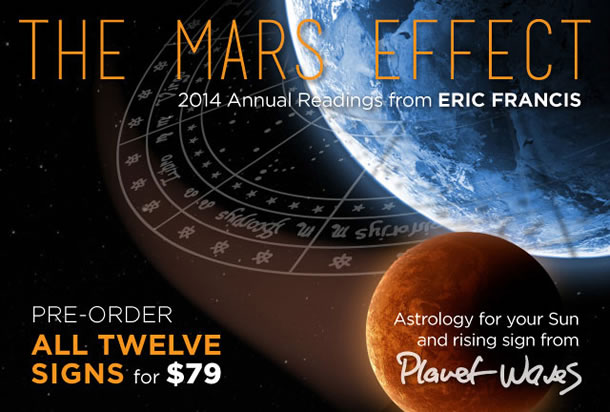
Have you pre-ordered your 2014 readings by Eric Francis yet? The Mars Effect (our 16th annual edition!) will be out this month, and will include in-depth audio and written readings for your Sun, Moon and rising signs. We always receive a flood of positive feedback for these readings, and it shows just how meaningful they are. One customer wrote, “I’m so grateful to you for the illumination and the reassurance this reading has bestowed.” We’re offering you a special package price of $79 for all twelve signs, available only to current Planet Waves members. Or you may purchase individual signs for $29.95.

Your Monthly Horoscopes — and our Publishing Schedule Notes
We published your extended monthly horoscopes for January on Friday, Jan. 3. We published Moonshine for the Gemini Full Moon Tuesday, Dec. 10. The Moonshine horoscopes for the Capricorn New Moon were published Tuesday, Dec. 31. Please note, we normally publish the extended monthly horoscope on the first Friday after the Sun has entered a new sign; Inner Space usually publishes the following Tuesday.
Weekly Horoscope for Friday, Jan. 10, 2014, #982 | By Eric Francis
Aries (March 20-April 19) — You have made your point; you don’t have to make it again, especially if it means in any way jeopardizing a relationship with someone who would be happier to cooperate with you than be your adversary. The theme of the next few months is that people will tend to become what you make them. You cast them into the role that you play, so it would be helpful to view the people around you in the most benevolent light. Look for opportunities to collaborate and take any chance you get to defuse potentially hostile situations and let any petty matters fizzle out. You currently live in a somewhat reactive psychic environment and it’s essential that you understand this thing known as projection — seeing things as you are, rather than as they are. Therefore, be friendly, spread good vibes and see how the universe responds to you.
Looking for an in-depth reading for the coming year? Pre-order THE MARS EFFECT, your 2014 annual readings, for a special rate of $79 for all twelve signs. It’s a great package of audio and written readings (plus bonus articles) that gives you access to your Sun, rising and Moon signs (and those of your loved ones). You may also pre-order individual signs for $29.95 here.
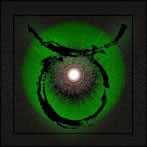
Taurus (April 19-May 20) — The thing to learn is how to say yes and no, and mean what you say. Human consciousness runs on a binary system, involving affirming and denying. If you look around, you’ll notice that many, many people lack a clear yes and a clear no. I suggest you observe yourself for a few days and see how you do — are you truly clear about asserting to yourself and to others what you want and what you don’t want? Notice the emotions associated with these two basic positions, which do nothing more or less than guide you through your life. As you get clearer, you will start to have more faith in yourself. You will trust what you know with greater clarity; you will feel less confused; you will have a different sense of the future. Indeed, you will begin to believe that you actually have a future.
Looking for an in-depth reading for the coming year? Pre-order THE MARS EFFECT, your 2014 annual readings, for a special rate of $79 for all twelve signs. It’s a great package of audio and written readings (plus bonus articles) that gives you access to your Sun, rising and Moon signs (and those of your loved ones). You may also pre-order individual signs for $29.95 here.

Gemini (May 20-June 21) — You’re about to resume thinking for yourself, after a brief hiatus of filtering your thoughts through someone else’s priorities. It’s not that their priorities are wrong or lack a basis in truth; rather, you know what is right for you and you have had more than enough input from others. At the moment you seem to be working out a set of sensitive details involving an intimate relationship or business partnership, and to do this effectively you need some detachment so that you can think more objectively. One temptation you might have is to proceed from weighting one person’s point of view too heavily to losing yourself to some form of group consciousness, and I suggest you make sure that you maintain your clarity and your independence from that as well. Stop asking people what they think; stop asking for advice or validation. You have all the information you need.
Looking for an in-depth reading for the coming year? Pre-order THE MARS EFFECT, your 2014 annual readings, for a special rate of $79 for all twelve signs. It’s a great package of audio and written readings (plus bonus articles) that gives you access to your Sun, rising and Moon signs (and those of your loved ones). You may also pre-order individual signs for $29.95 here.
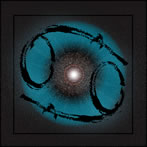
Cancer (June 21-July 22) — You can unravel a riddle in a relationship, but it seems to be doing that by itself a little more every day. Pay attention as this happens and you’ll learn a lot. There’s no sense picking a lock when the door is already open. There’s no need to make anything more complicated than it is. Yes, people sometimes reveal themselves in curious ways, and once things are sorted out, what you’re likely to discover in the end is that their motives and needs are pretty simple. I suggest therefore that you start from that premise, and not be too enamored of any seeming complexities, or of your own insecurities. You will be doing a lot of getting emotionally confident this year, and you’re going to learn this one situation at a time; you will learn to trust one person at a time, and come out discovering that you trust yourself.
Looking for an in-depth reading for the coming year? Pre-order THE MARS EFFECT, your 2014 annual readings, for a special rate of $79 for all twelve signs. It’s a great package of audio and written readings (plus bonus articles) that gives you access to your Sun, rising and Moon signs (and those of your loved ones). You may also pre-order individual signs for $29.95 here.
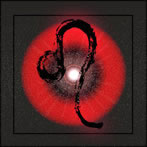
Leo (July 22-Aug. 23) — You’re getting more accomplished than you may think; I know it’s difficult to discern whether you’re actually making progress, treading water, sliding backwards or some combination of the above. The phrase ‘getting more accomplished’ is a pun — you’re indeed getting better at what you do, though mastery is not always evident to the perception of the one who is developing the skill. Your astrology suggests that you’re re-learning something you had already developed long ago, or going to a new depth of cultivating a talent that you usually take for granted. Part of the story involves how you structure your time, and how you work within an organization. Go back to the roots of the story, remind yourself the total history and see what you discover.
Looking for an in-depth reading for the coming year? Pre-order THE MARS EFFECT, your 2014 annual readings, for a special rate of $79 for all twelve signs. It’s a great package of audio and written readings (plus bonus articles) that gives you access to your Sun, rising and Moon signs (and those of your loved ones). You may also pre-order individual signs for $29.95 here.

Virgo (Aug. 23-Sep. 22) — Over the next few days you will have a series of opportunities to assert your leadership and your intelligence, though the most significant thing you’ll be tapping into is your creativity. Yet the true artistry of the moment is taking an inspiration and conveying it into something practical and immediate, designed to address a current problem. I’m not talking about art for art’s sake, but rather the use of innovation for the purpose of getting something done, solving a problem or initiating a discussion. You may find yourself in the role of facilitator, and if you can focus the energy of a group, you will find that you solve the problem a lot more quickly. But you’re the one who will seed the group with the idea that it will grow and crystallize. Don’t wait for it to come from someone else. At the moment, you’re the one with the fire in your mind.
Looking for an in-depth reading for the coming year? Pre-order THE MARS EFFECT, your 2014 annual readings, for a special rate of $79 for all twelve signs. It’s a great package of audio and written readings (plus bonus articles) that gives you access to your Sun, rising and Moon signs (and those of your loved ones). You may also pre-order individual signs for $29.95 here.
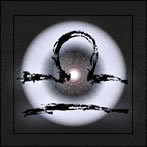
Libra (Sep. 22-Oct. 23) — You seem to be working out some deep insecurities, or grappling with self-doubt. Yet I would suggest that what’s really happening is that you’re letting go of some issue that’s been pestering you forever. This seems to involve whether you really need someone else to ‘make’ you feel safe and secure in the world, whether you can do it on your own, and what you need in order to do so. This is an excellent time to question the emotional influence that others have on you, or rather, that you seek and strive for. You need to know when you’re being overpowered, or giving up your power, so that you have a basis for choosing to do something else. This is likely to involve your family. Do they really help you feel safer on the planet? Do they encourage you to go beyond your self-doubts, or make you wonder when you’ll ever get around to getting over them?
Looking for an in-depth reading for the coming year? Pre-order THE MARS EFFECT, your 2014 annual readings, for a special rate of $79 for all twelve signs. It’s a great package of audio and written readings (plus bonus articles) that gives you access to your Sun, rising and Moon signs (and those of your loved ones). You may also pre-order individual signs for $29.95 here.

Scorpio (Oct. 23-Nov. 22) — You have no need to consider anyone, or any idea, a threat. It’s true that some influence is trying to undermine your thinking about something, and it’s also true that you may be frustrated trying to get anything done, hampered mainly by some challenges focusing. You can afford to slow down and think strategically. Retrace your steps and think about three or four moves ahead. But mainly, don’t let anyone undermine your confidence by offering a suggestion or an idea different than you might have come up with yourself. One of the most helpful roles others can play in your life is to do just that. If anyone seems to get under your skin, it’s likely to be because they have said something you were already thinking. While you may not have the answers right now, you definitely have access to the right questions.
Looking for an in-depth reading for the coming year? Pre-order THE MARS EFFECT, your 2014 annual readings, for a special rate of $79 for all twelve signs. It’s a great package of audio and written readings (plus bonus articles) that gives you access to your Sun, rising and Moon signs (and those of your loved ones). You may also pre-order individual signs for $29.95 here.
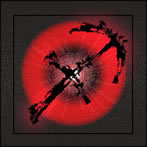
Sagittarius (Nov. 22-Dec. 22) — You may be looking right into a blind spot. That is to say, you may be looking at something and seeing nothing, or seeing in an inaccurate way. We all know about the blind spot in rearview mirrors; you think you’ve got a full view but there are hidden areas. The one I’m describing is not rearview but directly forward view. Someone may have a point of view that you’re not seeing, or that they are intentionally concealing. Someone close to you may be acting on incomplete or inaccurate information. I suggest that you suss this out gently, but with full intention. Determine what the people close to you believe and find out their motives for doing so. While you’re doing that, be aware that it’s not a good idea to follow people whose point of view you have not examined closely.
Looking for an in-depth reading for the coming year? Pre-order THE MARS EFFECT, your 2014 annual readings, for a special rate of $79 for all twelve signs. It’s a great package of audio and written readings (plus bonus articles) that gives you access to your Sun, rising and Moon signs (and those of your loved ones). You may also pre-order individual signs for $29.95 here.


Capricorn (Dec. 22-Jan. 20) — You’re getting to know yourself in a new way, and I do hope you’re interested in what you’re learning. You may be sick of the past, questioning the past and/or living in the past. Yet what you’re learning involves getting to the bottom of emotional attitudes and values that are very much a product of your conditioning, but which you have not fully evaluated your commitment to. Once you do, it will be abundantly clear what you want and what you don’t want; what is a positive influence and what is a negative influence. However, as you go about making up your mind what to do about this, beware if any guilt slips into your thinking. Guilt is evidence of control mechanisms that are leftovers from childhood. You are not betraying anyone by making up your own mind about how you feel. If anyone cares, remind yourself that your values are your business.
Looking for an in-depth reading for the coming year? Pre-order THE MARS EFFECT, your 2014 annual readings, for a special rate of $79 for all twelve signs. It’s a great package of audio and written readings (plus bonus articles) that gives you access to your Sun, rising and Moon signs (and those of your loved ones). You may also pre-order individual signs for $29.95 here.
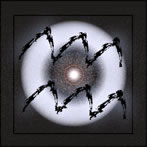
Aquarius (Jan. 20-Feb. 19) — It seems for weeks you’ve been trying to figure out how you feel about something, and you’re about to make that discovery. It’s so obvious you might be wondering how you missed it, but that seems to be a theme of your life lately. You can keep this process going and make the next week a celebration of the obvious. Part of the obvious that you may not have noticed are the relationships between many factors in your life that you previously thought of as separate. If you make up your mind that you’re beyond a growth stage where compartmentalization is helpful at all, you will embrace the connections between circumstances, people and influences. You are the one thing they have in common, and any attempt to divide ‘them’ up is really about dividing yourself; the recognition of unity in the world around you is the acceptance of your own integrity.
Looking for an in-depth reading for the coming year? Pre-order THE MARS EFFECT, your 2014 annual readings, for a special rate of $79 for all twelve signs. It’s a great package of audio and written readings (plus bonus articles) that gives you access to your Sun, rising and Moon signs (and those of your loved ones). You may also pre-order individual signs for $29.95 here.

Pisces (Feb. 19-March 20) — If you need something, you know the person from whom you can get it. If you have an idea you want to manifest, you have the resources to make it happen. You’re in a moment of extraordinary manifestation power, so the most significant thing you can do is identify your needs and desires, and articulate them to yourself clearly. Your chart is making an interesting point, something I’ve learned to consider any time I remember, which is that you may already have what you think you need. So before you go seeking and striving, look in your home, close to home and among the people that you know and love the best. In many ways 2014 is a time of reclaiming; a time of receiving; and of remembering. You need less than you think and you have far more than you know.
Looking for an in-depth reading for the coming year? Pre-order THE MARS EFFECT, your 2014 annual readings, for a special rate of $79 for all twelve signs. It’s a great package of audio and written readings (plus bonus articles) that gives you access to your Sun, rising and Moon signs (and those of your loved ones). You may also pre-order individual signs for $29.95 here.
To unsubscribe, click here
e Wiki | Friends | Editors Contact Us
Copyright © 2014 by Planet Waves, Inc. All Rights Reserved. Other copyrights may apply.
Some images used under Fair Use or Share Alike attribution.
